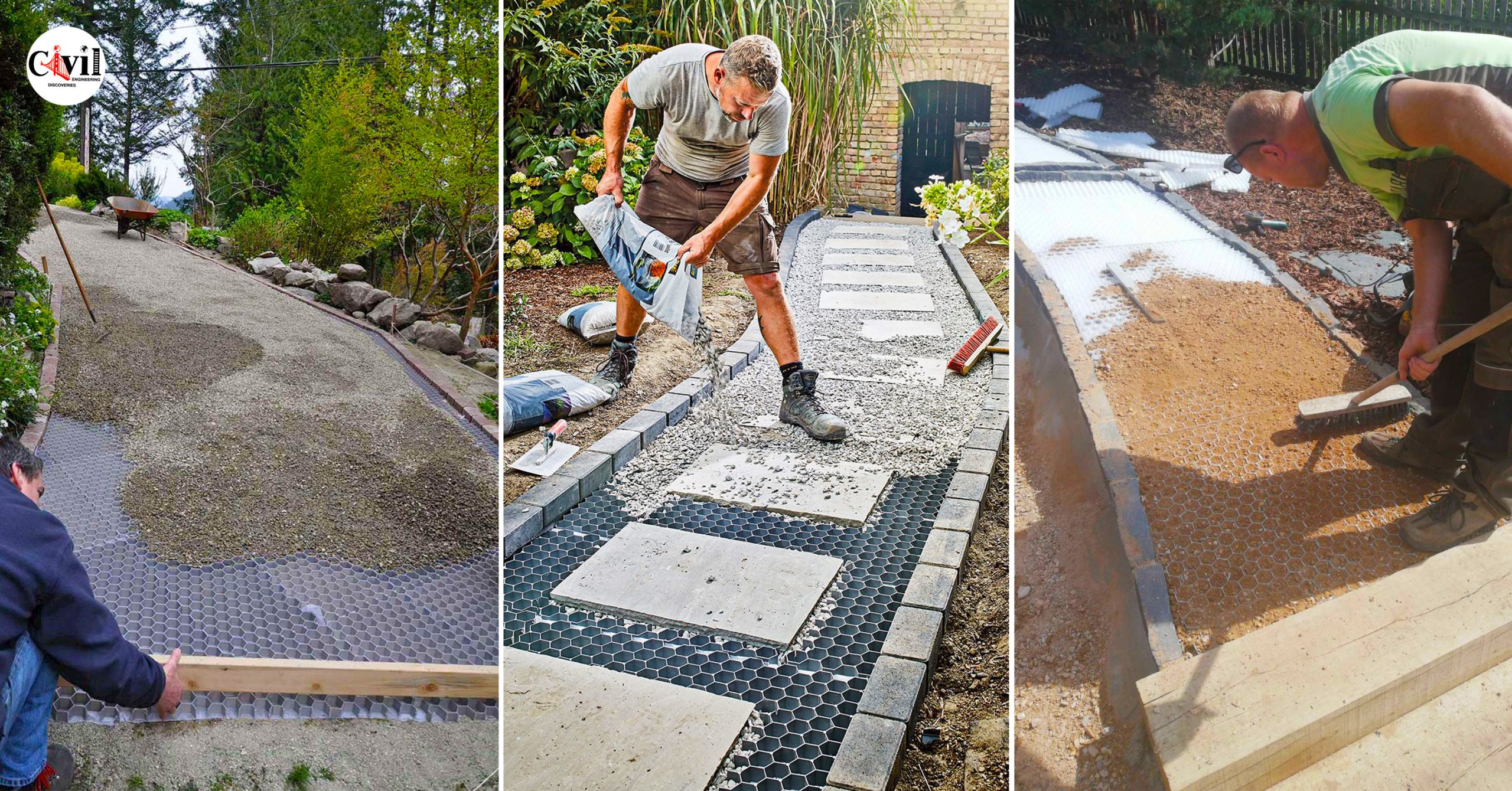The mesh system used in driveways to stabilize gravel typically involves a series of interlocking grids or honeycomb-like structures made from durable materials such as high-density polyethylene (HDPE). These grids are laid out on a prepared sub-base and then filled with gravel. The cells of the grid keep the gravel in place, preventing movement and shifting that can lead to ruts, potholes, and uneven surfaces.
Key features of the mesh system include:
- Interlocking Design: The grids fit together securely, creating a continuous and stable base that evenly distributes weight and prevents localized stress points.
- Durability: Made from robust materials like HDPE, the grids are resistant to weathering, UV radiation, and heavy loads, ensuring a long lifespan.
- Permeability: The open-cell design allows water to drain through, reducing runoff and preventing puddles and erosion.
- Easy Installation: The grids are lightweight and can be easily transported and installed, making them a practical choice for various projects.
- Versatility: They can be used in various settings, from residential driveways to commercial pathways, and are suitable for both new installations and renovations of existing gravel surfaces.
Overall, the mesh system provides a reliable solution for maintaining stable and aesthetically pleasing gravel driveways and paths, capable of withstanding heavy traffic while offering a comfortable walking surface.
Click Here To See The Future of Concrete: How Builders Are Redefining Surface Finishing























